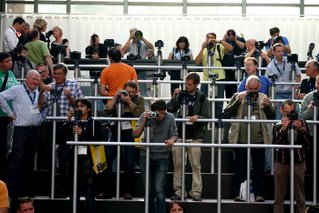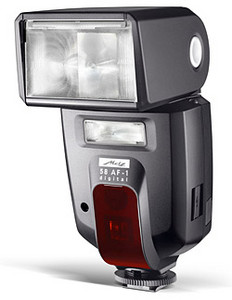
This lens is combination hydbrid technology from 3 companies.Leica,Panasonic and Olympus.For now its just available for the panasonic L1.
This innovative digital SLR lens was achieved by a combination of Leica's rich abundance of lens know-how and Panasonic's extraordinary optical and digital technologies.
The result is an entirely new kind of digital SLR camera - a tool capable of capturing all the beauty around you in clear, vivid, expressive images that are rich with emotion.
Introducing the LUMIX L1, with the new LEICA D VARIO-ELMARIT 14-50mm/F2.8-3.5 ASPH. lens. It's a lens that renders images of exquisite beauty in a digital SLR camera that offers comfortable, analog-like controls and easy, intuitive operation.
The Leica D lens and LUMIX L1. Two superb technologies, one exciting camera, countless possibilities.
Today's most advanced optical technologies...
Because it's the first-ever D lens
The LEICA D VARIO-ELMARIT 14-50mm/F2.8-3.5 ASPH. comprises 16 elements in 12 groups, with two glass molded aspherical lenses that feature large diameters and high dimensional precision. The D lens' many other advanced features include a carefully applied multi-coating to prevent flare and a circular aperture that produces a beautiful dimensional ambience. The focusing system is entirely internal, so the external length of the lens doesn't change during focusing.
The 14-50mm focal length is equivalent to 28-100mm on a 35mm film format. From wide angle to zoom, this lens does it all. You can take incredible beautiful portraits and expansive landscape photos. The minimum focusing distance is just 29 cm over the entire zoom range, so you can capture 0.32x close-ups (35mm equivalent).
An image-rendering performance with magnificent beauty and depth
While carrying over the renowned ability of Leica D lenses to express the "ambience" of air, smooth gradation and rich, vibrant color, this advanced new lens also features a state-of-the-art design that brings overall performance to new heights.
The D lens provides exceptional contrast all the way to the fully open 2.8 F-stop. Distortion and peripheral vignetting at the wide end are minimal. Image definition is superb, and there is no color bleeding. Particularly impressive is the D lens' ability to capture the subject three-dimensionally against a background with a shallow depth of field. This is the kind of lens that makes photography such a satisfying creative pursuit.
Review popfoto











